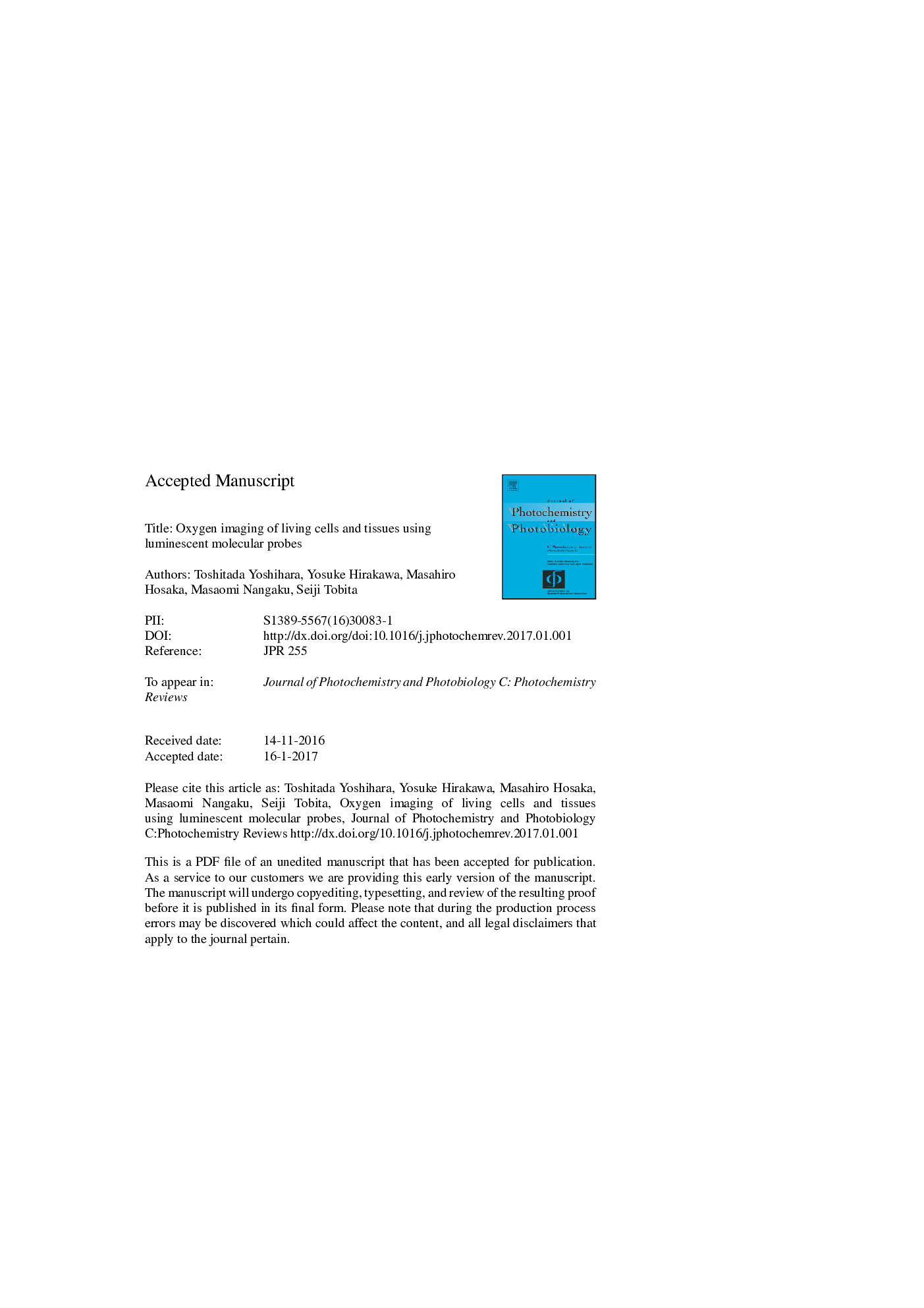| Article ID | Journal | Published Year | Pages | File Type |
|---|---|---|---|---|
| 4754763 | Journal of Photochemistry and Photobiology C: Photochemistry Reviews | 2017 | 82 Pages |
Abstract
Oxygen imaging of biological cells and tissues is becoming increasingly important in cell biology and in the pathophysiology of various hypoxia-related diseases. The optical oxygen-sensing method using luminescent probes provides very useful, high spatial resolution information regarding oxygen distribution in living cells and tissues. This review focuses on recent advances in biological oxygen measurements based on the phosphorescence quenching of probe molecules by oxygen, and on hypoxia-sensitive fluorescent probes. Special attention is devoted to metal complex probes, Pt(II)- and Pd(II)-porphyrins, Ru(II) complexes, and Ir(III) complexes. Current knowledge regarding the mechanism of phosphorescence quenching of metal complexes by oxygen is described in relation to the oxygen sensitivity of the probes, and recent advances in optical oxygen probes and detection techniques for intracellular and tissue oxygen measurements are reviewed, emphasizing the usefulness of chemical modifications for improving probe properties. Tissue oxygen imaging and hypoxic tumor imaging using these metal complex probes demonstrate the vast potential of optical oxygen-sensing methods using luminescent probes.
Related Topics
Physical Sciences and Engineering
Chemical Engineering
Bioengineering
Authors
Toshitada Yoshihara, Yosuke Hirakawa, Masahiro Hosaka, Masaomi Nangaku, Seiji Tobita,
